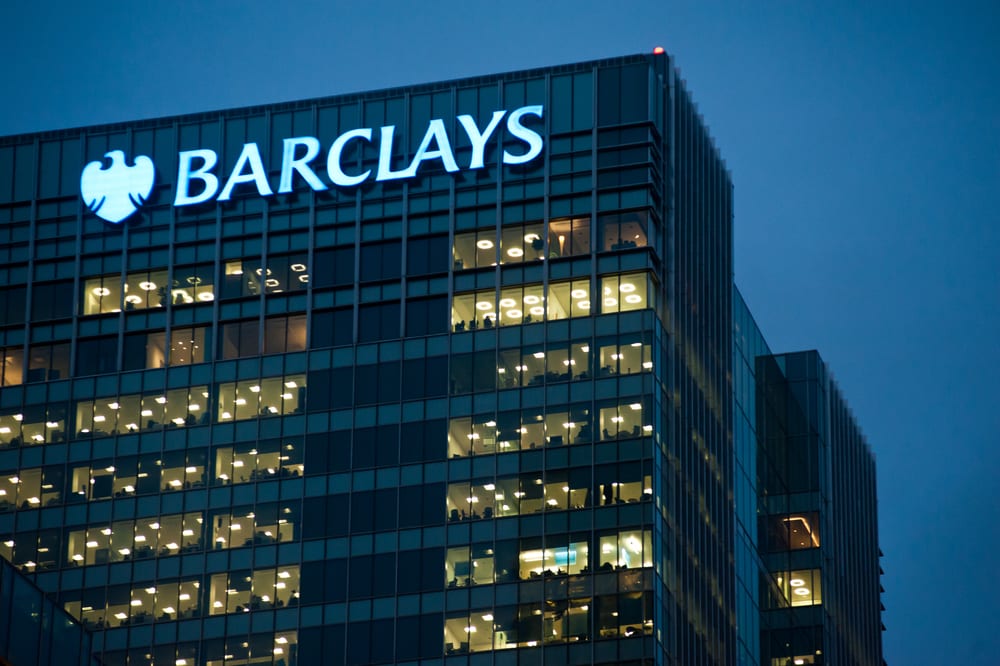Key points:
- Barclays has released Q1 2022 results
- There’s a half-billion “conduct charge” to take into account
- With BARC share price at half TNAV, is this a buy for us?
- Buying NatWest Buying Barclays – Should We Follow?
Barclays (LON: BARC) shares are up 2% this morning on their announcement of Q1 results for 2022. Slightly strangely, the BARC share price is significantly down over the year so far, a near 50% fall in fact. This isn’t what we would expect for a bank at a time of rising interest rates. So it’s worth trying to puzzle through this to work out whether there might be a turning point.
The operating results for Barclays are fine. OK, we might want more detail than fine – total income is up 10%, net interest income up 26% – that’s the sort of thing we would expect at a time of rising interest rates. As we’ve said about banks generally, and Lloyds more specifically, rising interest rates decompresses the interest rate margin that banks live off. So, we expect bank margins and so profits to increase as interest rates rise in this part of the monetary cycle.
Given that the credit cycle is turning, there’s a rise in credit impairment charges but nothing to frighten the horses. So, yes, the results are fine.

Also Read:Barclays, Metro, Lloyds, Which Banks Benefit From Rising Interest Rates Not Passed On To Savers?
But this leaves us with something of a puzzle. Lloyds, off the back of the results, just announced, is trading at a 20% or so discount to tangible net assets. Barclays, however, on these results, it’s trading around the 140p mark when TNAV – tangible net asset value – is 294p per share. That’s the sort of difference in valuation we’ve got to either explain or think will change. That is, either there’s an explanation between this valuation difference between Barclays and Lloyds, or we’d expect one or other of the prices to change substantially.
We’ve expected the Barclays share price to rise until there’s only that 20% discount to TNAV, to meet the Lloyds valuation – or, of course, Lloyds to fall to a 50% discount to TNAV.
Or, there’s an explanation for the different valuations being given by the same metric, net asset value.
The clue here is in one line of the Barclays results “included litigation and conduct charges of £0.5bn relating to the over-issuance of securities by Barclays Bank PLC in the US and”. Some error, over there, sliced half a billion off these results. We know what that error was, too. Barclays issues a series of notes (no, we don’t need to know any more detail than that) and so do so they file with the SEC saying how many they will issue. They issued more than they’d told the SEC and so had to buy them back at issue price – that lost $500 million.
A childish mistake, a very silly one of not checking the paperwork. One that’s unlikely to be repeated – not even bankers keep making the same mistake.
But it does explain the difference in valuation between Barclays and Lloyds. Not this specific mistake, but the very existence of that business which made it. Capital market income is much more risky than straight lending margins. Barclays does very much more investment banking, and capital markets business than Lloyds – near all of Lloyds income is straight lending margins. Given the higher risk capital markets income is valued at a lower multiple than interest margin. Further, assets devoted to capital markets gain a lower valuation than those to purer lending.
That is, there is that reason for the different valuations to TNAV of the Barclays shares compare to the Lloyds. It’s still entirely possible that there will be a change in this relationship but having found our reason for the price difference, we don’t, therefore, conclude that it must close.
Barclays shares may or may not be a good investment or trade for us but these results don’t prove that either way.




